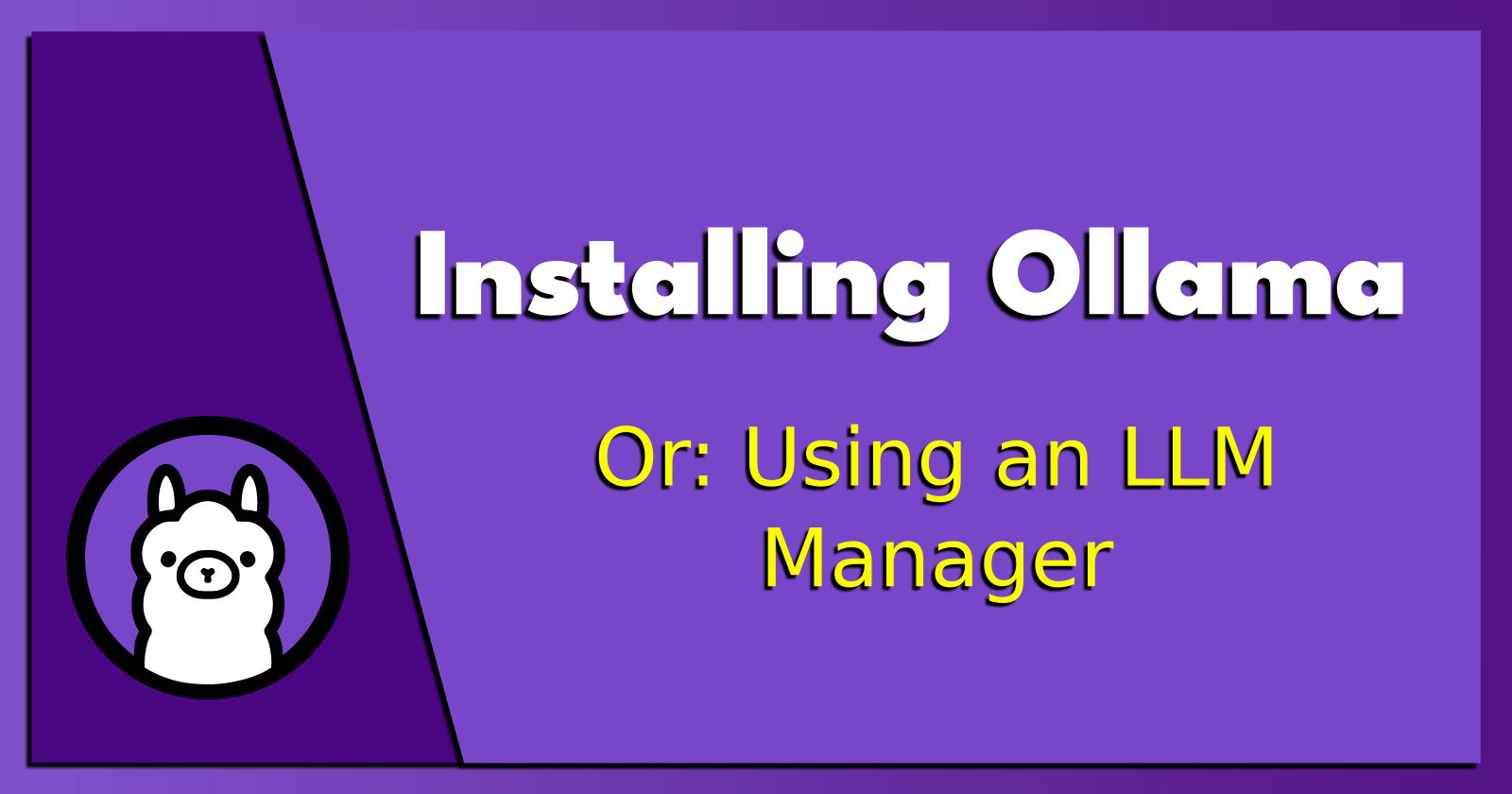Installing Ollama.
 Brian King
Brian King
Update: Saturday 12th December 2023.
Update: Sunday 31st December 2023 (yes, I'm working on New Year's Eve.)
Update: Tuesday 20th February 2024.
Update: Sunday 10th March 2024.
Update: Wednesday 19th June, 2024 (installing in the (base) environment.)
TL;DR.
This post describes the installation of Ollama, a local large language model (LLM) manager. It requires a Linux-based distro and Miniconda. I install Ollama into my (base) environment. It is used to download, and run, LLMs. In this case, I use the Mistral model as an example. Ollama enables the use of powerful LLMs for research, development, business (if the license allows), and personal use.
Attributions:
.
NOTE: After extensive use, I have decided that Ollama should be installed in the (base) environment. This installation process reflects my opinion.
An Introduction.
LLMs (large language models) are amazing machines. They are the bleeding edge of modern technology and devs should learn, and adapt to, these awesome engines.
The purpose of this post is to describe how to install Ollama, a local LLM manager.
The Big Picture.
There are many open-source LLMs. Ollama provides easy access to a large, popular set of these models. Visit the Ollama models library to get a full list of the LLMs they support. The index is continually updated, so I frequently revisit this archive.
I love Hugging Face, but it's also nice to have a curated series of models.
Prerequisites.
- A Debian-based Linux distro (I use Ubuntu).
Updating my Base System.
- From the (base) terminal, I update my base system:
sudo apt clean && \
sudo apt update && \
sudo apt dist-upgrade -y && \
sudo apt --fix-broken install && \
sudo apt autoclean && \
sudo apt autoremove -y
What is Ollama?
Ollama is a tool that is used to download, set up, and run large language models on a local PC. It lets me use powerful models like Llama 2 and Mistral on my personal computer. Ollama natively runs on Linux, macOS, and Windows (in preview).
Installing Ollama.
- I install Ollama:
curl https://ollama.ai/install.sh | sh
- I list the LLMs downloaded by Ollama:
ollama list
- If the above command fails, I run Ollama as a background service:
ollama serve &
- If the following error shows when running the previous command, that means Ollama is already running as a background service:
Error: listen tcp 127.0.0.1:11434: bind: address already in use
Using Ollama to Run the Mistral Model.
- I run the Mistral model:
ollama run mistral
NOTE 1: The
ollama runcommand performs anollama pullif the model has not already been downloaded to my local system.NOTE 2: The
ollama runcommand is used to run the named LLM.NOTE 3: I sometimes need to restart my terminal or system to run the LLM.
Testing the Mistral Model.
- At the
>>>prompt, I run the following command:
tell me a joke
NOTE: Do NOT expect the joke to be funny. Prepare to be underwhelmed.
The Results.
By following the steps outlined in this post, I can install Ollama, download LLMs from Ollama.ai, and run these models locally. This process enables me to evaluate the power of cutting-edge models for research, development, business, and personal use.
NOTE: Commercial use depends on the license of each model.
In Conclusion.
LLMs are the bleeding edge of modern technology and I should adopt these awesome engines.
I've been exploring Ollama, a local LLM manager that provides easy access to a selection of open-source LLMs from Ollama.ai. Their list of supported LLMs is continually updated. It's a buffet of cutting-edge tech that keeps on growing!
The installation process was straightforward because all I needed was a Linux-based distro. I created and activated a new environment named (Ollama) using the conda command. I installed Ollama in my (base) environment, downloaded an LLM, and ran that model (which, in this case, was 'Mistral'.)
By following these steps, I have set up and installed Ollama, downloaded an LLM from Ollama.ai, and ran the model locally.
This is a game-changer for research, development, business (if the license for the model allows), and personal use. Future Tech is here and it's time to embrace it.
Have you used Ollama? What has been your experience? Let's discuss in the comments below!
Until next time: Be safe, be kind, be awesome.
#Ollama #LLM #LocalLLM #LargeLanguageModels
#AI #ArtificialIntelligence #MachineLearning #DeepLearning
#Ubuntu #Linux #MistralModel #TechBlog #Research
#Development #AIInstallation #TechTutorial #OpenSource
#FutureTech #AICommunity
Subscribe to my newsletter
Read articles from Brian King directly inside your inbox. Subscribe to the newsletter, and don't miss out.
Written by

Brian King
Brian King
Thank you for reading this post. My name is Brian and I'm a developer from New Zealand. I've been interested in computers since the early 1990s. My first language was QBASIC. (Things have changed since the days of MS-DOS.) I am the managing director of a one-man startup called Digital Core (NZ) Limited. I have accepted the "12 Startups in 12 Months" challenge so that DigitalCore will have income-generating products by April 2024. This blog will follow the "12 Startups" project during its design, development, and deployment, cover the Agile principles and the DevOps philosophy that is used by the "12 Startups" project, and delve into the world of AI, machine learning, deep learning, prompt engineering, and large language models. I hope you enjoyed this post and, if you did, I encourage you to explore some others I've written. And remember: The best technologies bring people together.